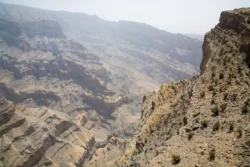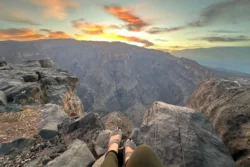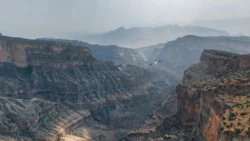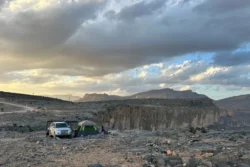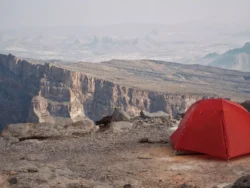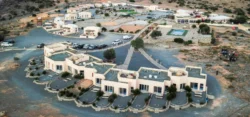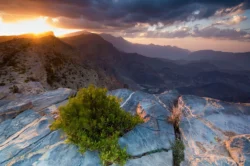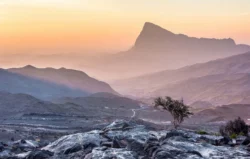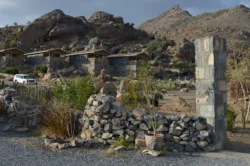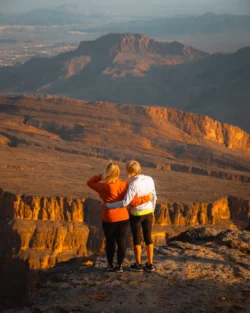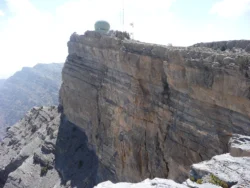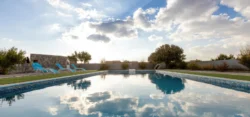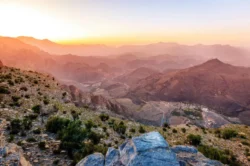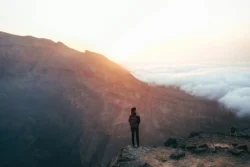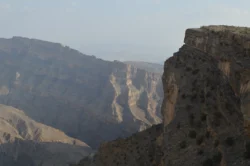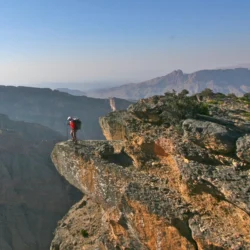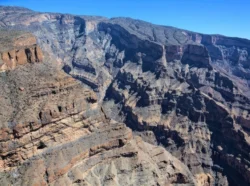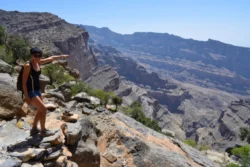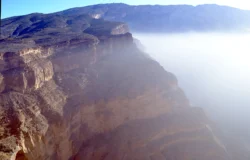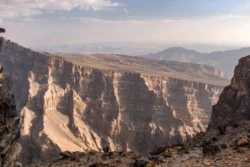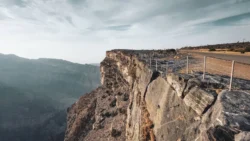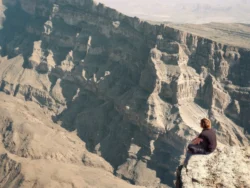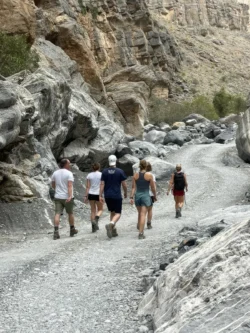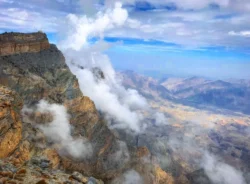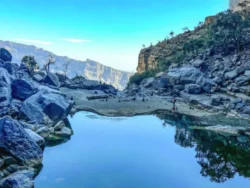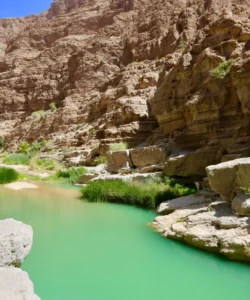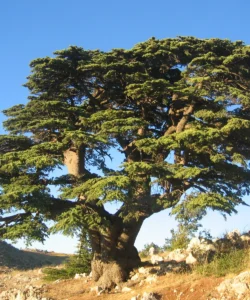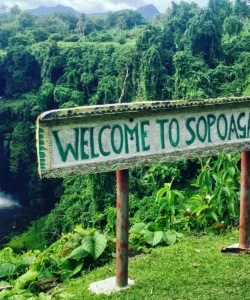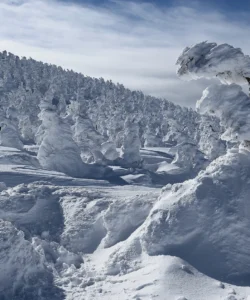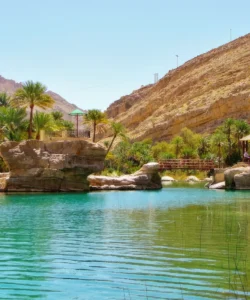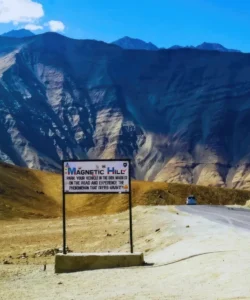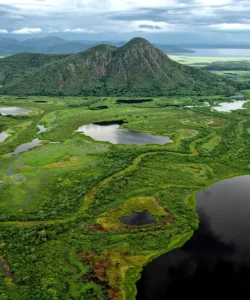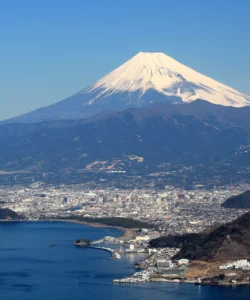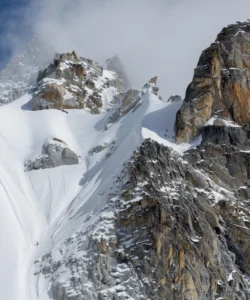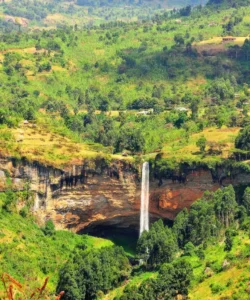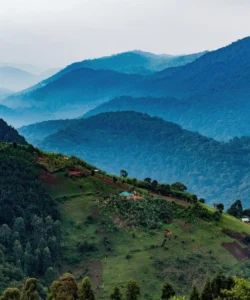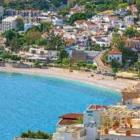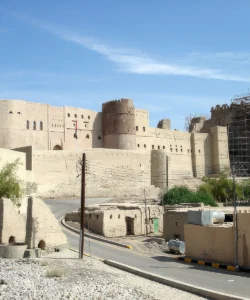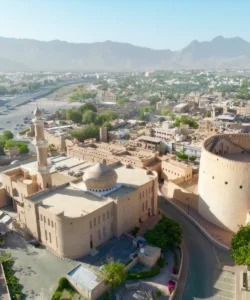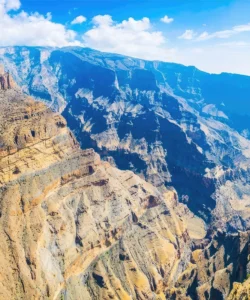Jebel Shams, meaning “Mountain of the Sun” in Arabic, is the highest mountain in Oman, part of the Al Hajar mountain range. Standing at approximately 3,009 meters (9,872 feet) at its highest accessible point (the North Summit is a military restricted area), it is renowned for its breathtaking views into Wadi Ghul, often referred to as the “Grand Canyon of Arabia.” This majestic peak offers a dramatic landscape of towering cliffs, deep gorges, and rugged terrain, attracting hikers, adventurers, and nature lovers seeking cooler temperatures and spectacular vistas.
Listen to an introduction about Jebel Shams
Name and Address
- Name: Jebel Shams (Arabic: جَبَل شَمْس, lit. ‘Mountain of Sun’)
- Address: Located in northeastern Oman, north of the town of Al-Hamra, within the Ad Dakhiliyah Governorate.
How to Get There
Visiting Jebel Shams typically involves a drive from Muscat or Nizwa, followed by exploring the mountain’s accessible areas.
- By Car: Jebel Shams is about a 2.5 to 3-hour drive from Nizwa and approximately 4 to 5 hours from Muscat. While the main road leading up the mountain is paved, a 4×4 vehicle is highly recommended, especially for accessing some of the higher viewpoints or if there has been recent rain, as some sections can be unpaved or bumpy.
- Organized Tours: Many tour operators offer day trips or overnight excursions from Muscat or Nizwa that include Jebel Shams, often combining it with visits to nearby historical sites like Nizwa Fort.
- On-Site: The drive itself offers stunning scenery. The most popular accessible area is a high plateau with viewpoints overlooking Wadi Ghul. The famous Balcony Walk (W6 trail) starts from the village of Al Khitaym, which is accessible by car. There are a few resorts and guesthouses on the mountain for overnight stays, allowing visitors to experience both sunrise and sunset. Be prepared for significantly cooler temperatures at the summit, especially at night, and bring warm layers, water, and sun protection.
Landscape and Features
Jebel Shams is characterized by its dramatic mountainous landscape, deep canyons, and unique climate.
- “Grand Canyon of Arabia” (Wadi Ghul): The most striking feature is the enormous chasm of Wadi Ghul, which plunges over 1,000 meters (3,281 feet) deep, revealing ancient rock layers and dramatic vertical cliffs. The views into this canyon are truly awe-inspiring.
- High Altitude Climate: Due to its elevation, Jebel Shams experiences cooler temperatures than Oman’s coastal and desert regions. It has distinct seasons, with occasional rainfall primarily in winter, and can even see snow. This cooler climate makes it a popular summer escape.
- Hiking Trails: The mountain offers various hiking trails, ranging from easy to challenging. The most famous is the Balcony Walk (W6), a moderate 3-4 hour return hike along the rim of Wadi Ghul, leading to an abandoned village (As Sab) and sometimes a hidden pool or waterfall.
- Geological Formations: The rugged terrain showcases fascinating rock formations, striations, and diverse geological layers.
- Flora and Fauna: Despite the arid surroundings, the mountain supports hardy juniper trees, various wildflowers (especially in spring and autumn), shrubs, grasses, and wildlife such as mountain goats and various bird species.
What Makes It Famous
- Oman’s Highest Peak: As the highest mountain in Oman, it holds a significant geographical distinction.
- “Grand Canyon of Arabia”: The spectacular views into Wadi Ghul have earned it this impressive nickname, drawing comparisons to the famous Grand Canyon in Arizona.
- Dramatic Scenery: Its towering cliffs, deep gorges, and panoramic vistas make it a premier destination for breathtaking natural beauty and photography.
- Adventure Tourism: It’s renowned for its hiking and trekking opportunities, particularly the Balcony Walk, attracting outdoor enthusiasts.
- Cooler Climate Escape: Its significantly cooler temperatures provide a welcome respite from the intense heat of Oman’s lowlands, making it a popular getaway during warmer months.
- Sunrise and Sunset Views: The “Mountain of the Sun” lives up to its name, offering incredibly dramatic sunrise and sunset experiences from its high viewpoints.
Differences from Some Other Attractions
- Mountain and Canyon Focus: Unlike coastal attractions (like Antalya’s beaches) or historical cities (like Ephesus), Jebel Shams’ fame is entirely centered on its high-altitude mountain landscape and the dramatic canyon it overlooks, offering a raw, rugged natural experience.
- Hiking-Centric Exploration: While other natural sites might involve short walks or swimming (like Wadi Shab or Bimmah Sinkhole), Jebel Shams is primarily explored through hiking along canyon rims or mountain trails, making physical activity a core part of the visit.
- Extreme Elevation and Climate Contrast: Its significant elevation provides a stark climatic contrast to the rest of Oman, with cooler temperatures and even occasional snow, a feature not found in other lowland or desert attractions.
- Absence of Ancient Structures (at the peak): Unlike Mount Nemrut, which is famous for its ancient statues and tomb-sanctuary at the summit, Jebel Shams’ allure is purely natural, without major man-made ancient structures at its highest accessible points. The historical elements are more in nearby abandoned villages or forts.
Jebel Shams Photos:

